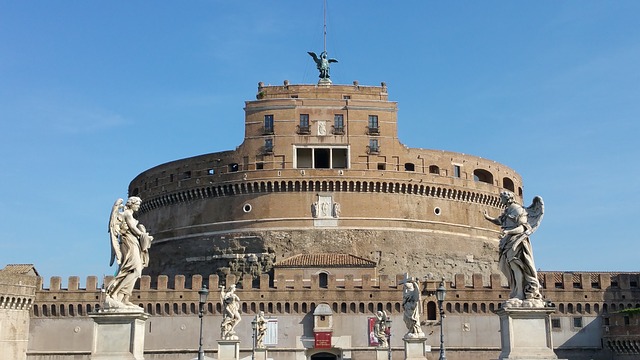
Castel Sant’Angelo – The legend of St Michael
Castel Sant’Angelo, also known as Hadrian’s Mausoleum, is a monument in Rome whose history began in 135 AD. The Emperor Hadrian asked the architect Demetrius to build a funeral mausoleum for himself and his family, inspired by the model of the Mausoleum of Augustus, but with gigantic dimensions. From that moment on, the centuries-long history of this building began.
Castel Sant’Angelo is one of the most fascinating architectural sites in Rome. And it has had many unsolved mysteries surrounding it for centuries. But there is one legend in particular that we would like to tell you about: the one that explains its name.
According to tradition, in 590 AD, Pope Gregory the Great ascended to the papal throne against the backdrop of a city in the grip of anarchy and famine. Only a few, scanty citizens wandered among the ruins of what had been the capital of the world. To further complicate an already critical situation, a disastrous flood of the Tiber – which submerged most of the city – and a terrible plague, which decimated the already sparse population, arrived.
To invoke divine mercy, Pope Gregory organised a three-day procession. The entire population took part, singing hymns in a city prey to the plague, which also mowed down the procession, electrocuting the men and causing them to fall to their deaths. As they reached Hadrian’s mausoleum, however, the Romans could clearly see something of incredible. The bright silhouette of the archangel Michael silhouetted against the violet sky in the act of sheathing a flaming sword. It was 29th August 590. That very evening the pestilence ceased. Hadrian’s mausoleum thus became the Castle of the Angel.
How did you like this curiosity? If you want to discover the secrets, legends and mysteries of other cities, download the curiosity app. Download Secret Maps!
And if you want to listen to something interesting, try the first Travel Podcast Platform. Try Loquis!

